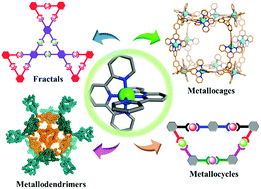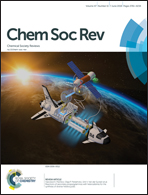Terpyridine-based metallosupramolecular constructs: tailored monomers to precise 2D-motifs and 3D-metallocages
Abstract
This overview represents a comprehensive summary of the recent developments in the growing field of terpyridine-based, discrete metallosupramolecular architectures. The N-heteroaromatic ligand [2,2′:6′,2′′]terpyridine (tpy) presents a convergent N,N′,N′′-chelating donor set and has the ability to bind diverse metal ions to form stable pseudo-octahedral 〈tpy–M2+–tpy〉 bonds. Use of 〈tpy–M2+–tpy〉 connectivity for the edges and directed organic vertices has opened the door to diverse, dynamic, utilitarian macromolecular materials. New strategies have been employed to synthesize a range of 2D- and 3D-fractals as well as novel macrocyclic constructs by employing new designer strategies, such as: triangle-based frameworks, hexagonal fractal designs, flexible polyterpyridine linkers, and noncovalent interactions for spontaneous quantitative self-assembly. Numerous examples of heteroleptic self-assembly have been described along with the synthesis of heterometallic conjugates using step-wise protocols. Utilizing multiplanar, directed spacer units in the polyterpyridine vertices, new 3D-polyhedra were obtained facilitating the assembly of hybrid fractal-dendritic materials. These constructs are shown to undergo tunable conformational transformations by responding to specific stimuli such as concentration, temperature, and counter ions. The increasing ability to exploit hierarchical self-assembly of complex, higher order supramolecular nanomaterials is discussed.



 Please wait while we load your content...
Please wait while we load your content...